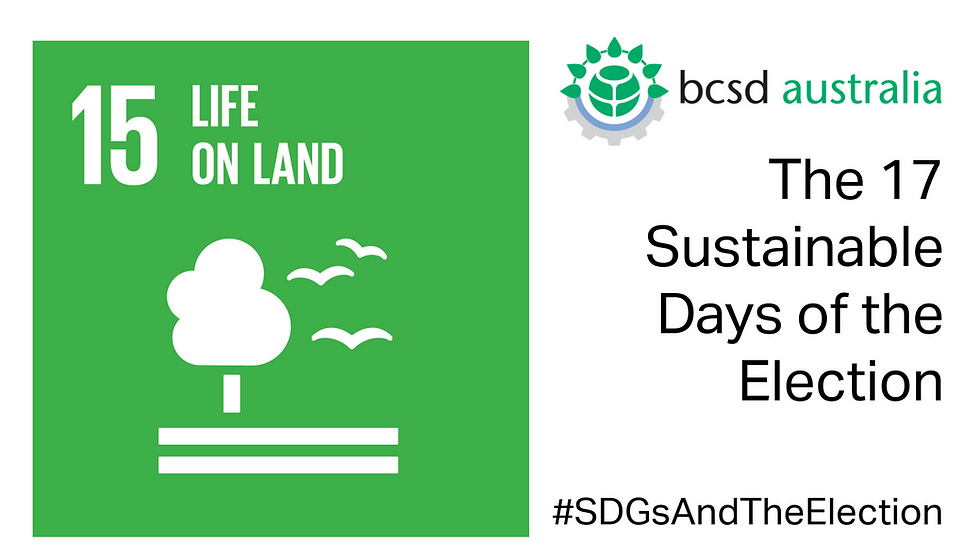SDG15: The 17 Sustainable Days of the Election
- BCSD Australia
- May 15, 2019
- 2 min read
Updated: May 27, 2019
Through the lens of the UN Sustainable Development Goals (SDGs), over the 17 days leading up to the Australia’s national election we will be highlighting the challenge for an inclusive and sustainable Australia, what can be done to address the challenge and what BCSD Australia, as part of a global WBCSD network is doing to create impact.
On Day 15, we are looking at SDG15: Life on land

Australia does meet its Aichi Biodiversity Target 11 in achieving protection for 17% of terrestrial areas and inland waters.
However, many of our bioregions are underrepresented with the majority experiencing downgrading, downsizing or degazettement. And 20% of Key Biodiversity Areas (KBAs) are not represented in protected areas while only a small proportion of KBAs are fully represented—with the rate of improvement of complete coverage slowing down.
There is also consensus that our forest area is in decline, and that it is expected to continue in the absence of regulatory change. Even with anti-land clearing laws in some states, some measures now rank Australia among the top nations in the world for deforestation.
As for the status of Australia’s species - as adjudicated by assessment of vertebrates and cycads in the Red List Index and a plethora of other scientific studies - is one of decline. In particular, mammals are in a perilous state, while the forecast for threatened species is grave.
Funding to protect our natural resources is woefully inadequate, while the budgeting is opaque. According to The Conversation, Australia spends about $200 million a year on the conservation of threatened species, about 10% of what the US government outlays. In contrast, Australians spend about $4 billion a year caring for pet cats.
To correct Australia’s in different record to protect and restore its ecosystems, a course correct to that envisaged by this Sustainable Development Goal we must:
Embrace the National Environmental–Economic Framework to better value economic externalities such as nature.
Introduce generation-scale funding commitment and long-term vision to escape the flawed three-year cycle of contested government funding.
Our environmental laws need strengthening to remove discretionary decision-making and correct decades of patchy enforcement.
Overhaul national and state planning laws and decision-making processes to achieve a better balance.
Co-design sustainable finance models to drive the public-private engagement in the Partnership statements.
What is BCSD Australia doing to create impact to address these challenges?
We are working with a number of partner organisations on projects that will help to address this challenge here in Australia and around the world, including:
Follow us on Twitter and LinkedIn to see our latest posts on #SDGsAndTheElection each day.




Comments